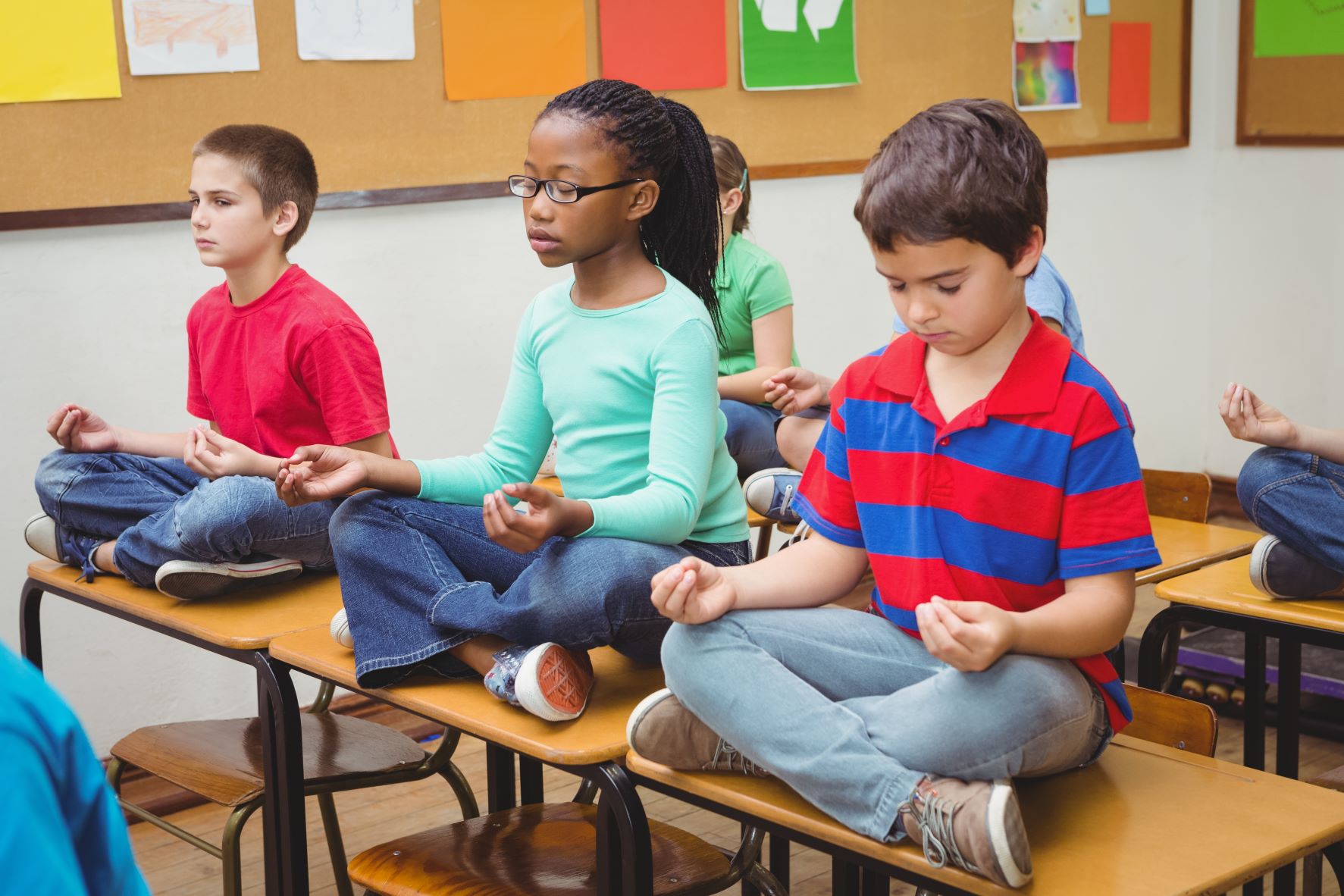5 Reasons Why We Need Mindfulness in Schools
Mindfulness is an important life skill for kids growing up in any era — but it may be especially important for kids today. These are, as they say, unprecedented times; between virtual learning and social isolation, today’s students are facing challenges that have never before been seen.
Although mindfulness is not a panacea, it is a practice that has proven benefits for young people, from reducing anxiety to improving self-image.
If you’re still unsure about introducing mindfulness into your school’s curriculum, here are 5 specific reasons why we need mindfulness in schools — especially right now.
What Does it Mean to Have Mindfulness in Schools?
When you first hear about school-based mindfulness, you might imagine classrooms full of children quietly sitting cross-legged in meditation. As a teacher, you can probably already imagine that, in reality, that’s not usually what mindfulness for children looks like.
School-based mindfulness programs introduce the practice of mindfulness to both teachers and students. This can be done through direct lesson plans, but there are also ways to weave in mindfulness practices to your existing curriculum.
School-based mindfulness programs like Calm Classroom’s help you teach mindfulness in a way that’s engaging and relatable for young people. There are many different ways to practice mindfulness — in fact, just about anything can be turned into a mindfulness practice. Sitting meditation is one way, but it may not always be the best way for your students.
Why Do We Need Mindfulness in Schools?

So why do schools need to implement mindfulness, especially now? Here are 5 of the most important reasons.
Mindfulness reduces student anxiety
Student mental health has taken a hit during the pandemic, and it’s completely understandable why that might be. Kids today are juggling multiple Covid-related stressors, from worrying about sick family members to not being able to see their peers. And that’s on top of all of the usual stressors that life brings, like academic pressures and relationship problems.
The impact of Covid-19 on young people’s mental health has been so severe that the U.S. Surgeon General has issued an advisory on the youth mental health crisis.
Mindfulness is a proven intervention for reducing stress and anxiety. Kids today are anxious, and for good reason; a school-based mindfulness program can teach them essential skills to manage those feelings.
Mindfulness improves focus and attention
Focus is usually one of the first things that comes to mind for teachers when discussing mindfulness. On one hand, children are at a different neurodevelopmental stage than adults and most of them will probably never be able to sit still and pay attention for long periods of time. On the other hand, mindfulness has been found to improve people’s focus and attention.
Mindfulness invites us to intentionally pay attention to each present moment. Often, it’s hard for us, even as adults, to stay present because of distractions, either within or around us. Practicing mindfulness on a regular basis can strengthen neural networks in our brains and improve executive functioning, including our capacity to focus. This is a helpful practice for students to begin at a young age.
Mindfulness helps students regulate emotions
Again, students’ mental health has worsened throughout the pandemic. But it’s important to remember that even students without diagnosable mental health concerns are still living with complex and difficult emotions. One of those emotions may be anxiety, but others include anger, frustration, and loneliness.
Mindfulness is a tool that can help your students notice and regulate these emotions. Often, when children feel overwhelmed with strong emotions, they act out — which is what may cause some behavioral concerns. Using mindfulness, young people can notice what they’re feeling, and have the self-efficacy to be able to deal with these emotions in healthy ways.
Nearly 90% of teachers participating in Calm Classroom say that their students are better able to regulate their emotions.
Mindfulness creates a calmer classroom environment
The world today feels like it’s in a state of chaos, and students can pick up on that. For many students, school may be one place in their world where they can feel safe and at ease. You can nourish and protect that safety by using mindfulness to create a calm classroom environment.
A school-based mindfulness program may not lead to your young students sitting in silent meditation for long periods of time. But that doesn’t mean that mindfulness won’t help your classroom become calmer at all. Over 90% of the teachers who have participated in Calm Classroom’s program, for example, say that their students are calmer and more peaceful.
Reduces teacher burnout
It’s not just about your students — it’s about you, too! A school-based mindfulness program can also improve teacher well-being and reduce burnout.
Teacher burnout is a serious issue. Up to a third of teachers report symptoms of burnout at any given time. The true number is likely much higher than that, especially in 2022. Although mindfulness and self-care shouldn’t be used to excuse or rationalize teacher burnout — this is a serious issue that needs to be addressed on a policy level — it can help you to manage the stress that often comes along with this profession.
Over 80% of teachers participating in Calm Classroom felt a reduction in stress and anxiety (in themselves) and felt more physically relaxed.
If you’re interested in implementing a mindfulness program at your school, Calm Classroom can help. View our teacher survey results to see how Calm Classroom’s mindfulness program benefits both students and teachers.





SIGN UP FOR OUR NEWSLETTER